Space-Based Focal Plane Ambiguous Measurement Ballistic Target MeMber Tracking
Abstract
1. Introduction
2. Detection Error Analysis and Focal Plane Measurement Modeling
3. MeMber Filter Based on Ambiguous Measurement
3.1. Generalized Likelihood Function Based on Ambiguous Measurement
3.2. SMC-CBMeMber Filter Based on Ambiguous Measurement
4. Simulation Experiment
5. Conclusions
Author Contributions
Funding
Conflicts of Interest
References
- Glowacz, A.; Glowacz, Z. Diagnostics of stator faults of the single-phase induction motor using thermal images, MoASoS and selected classifiers. Measurement 2016, 93, 86–93. [Google Scholar] [CrossRef]
- Singh, G.; Naikan, V.N.A. Infrared thermography based diagnosis of inter-turn fault and cooling system failure in three phase induction motor. Infrared Phys. Technol. 2017, 87, 134–138. [Google Scholar] [CrossRef]
- Boone, N.; Zhu, C.; Smith, C.; Todd, I.; Willmott, J.R. Thermal near infrared monitoring system for electron beam melting with emissivity tracking. Addit. Manuf. 2018, 22, 601–605. [Google Scholar] [CrossRef]
- Johnson, B.; Thomas, S.; Rani, J.S. A novel framework for objective detection and tracking of TC center from noisy satellite imagery. Adv. Space Res. 2018, 62, 44–54. [Google Scholar] [CrossRef]
- Blackman, S.; Popoli, R. Design and Analysis of Modern Tracking Systems (Artech House Radar Library); Artech House: Norwood, MA, USA, 1999. [Google Scholar]
- Lin, L.K.; Xu, D.; Sheng, W.D.; An, W.; Xu, H. Spaceborne infrared image plane tracking method for midcourse ballistic target group based on random finite sets. J. Infrared Millim. Waves 2010, 6, 465–470. [Google Scholar]
- Lin, L.K.; Xu, H.; Long, Y.L.; An, W.; Xie, K. Infrared multisensor group tracking method for midcourse ballistic target group based on probability hypothesis density filtering. Acta Opt. Sin. 2011, 2, 262–269. [Google Scholar]
- Sheng, W.D.; Lin, L.K.; Zhou, Y.Y.; An, W. A performance analysis method of passive multisensor multitarget track association based on multiBernoulli model. Signal Process. 2010, 26, 1526–1531. [Google Scholar]
- Zhao, W.; Huang, S. Ballistic target PHD filter based on infrared focal plane ambiguous observation. Math. Prob. Eng. 2017. [Google Scholar] [CrossRef]
- Blackman, S.S. Multiple hypothesis tracking for multiple target tracking. IEEE Aerosp. Electron. Syst. Mag. 2004, 19, 5–18. [Google Scholar] [CrossRef]
- Svensson, L.; Svensson, D.; Guerriero, M.; Willett, P. Set JPDA filter for multitarget tracking. IEEE Trans. Signal Process. 2011, 59, 4677–4691. [Google Scholar] [CrossRef]
- Granstrom, K.; Orguner, U. A PHD filter for tracking multiple extended targets using random matrices. IEEE Trans. Signal Process. 2012, 60, 5657–5671. [Google Scholar] [CrossRef]
- Granström, K.; Willett, P.; Bar-Shalom, Y. PHD filter with approximate multiobject density measurement update. In Proceedings of the 18th International Conference on Information Fusion, Washington, DC, USA, 6–9 July 2015. [Google Scholar]
- Mahler, R.P.S.; Vo, B.T.; Vo, B.N. CPHD filtering with unknown clutter rate and detection profile. IEEE Trans. Signal Process. 2011, 59, 3497–3513. [Google Scholar] [CrossRef]
- Battistelli, G.; Chisci, L.; Fantacci, C.; Farina, A. Consensus CPHD filter for distributed multitarget tracking. IEEE J. Sel. Top. Sign. Process. 2013, 7, 508–520. [Google Scholar] [CrossRef]
- Vo, B.T.; Vo, B.N.; Cantoni, A. The cardinality balanced multi-target multi-Bernoulli filter and its implementations. IEEE Trans. Signal Process. 2009, 57, 409–423. [Google Scholar]
- Yin, J.; Zhang, J.; Zhao, J. The Gaussian particle multi-target multi-Bernoulli filter. In Proceedings of the 2nd International Conference on Advanced Computer Control, Shenyang, China, 27–29 March 2010. [Google Scholar]
- Ouyang, C.; Ji, H.; Li, C. Improved multi-target multi-Bernoulli filter. IET Radar Sonar Navig. 2012, 6, 458–464. [Google Scholar] [CrossRef]
- Clark, D.E.; Panta, K.; Vo, B.N. The GM-PHD filter multiple target tracker. In Proceedings of the 9th International Conference on formation Fusion, Florence, Italy, 10–13 July 2006. [Google Scholar]
- Clark, D.; Vo, B.N. Convergence analysis of the Gaussian mixture PHD filter. IEEE Trans. Signal Process. 2007, 55, 1204–1212. [Google Scholar] [CrossRef]
- Clark, D.; Vo, B.N.; Bell, J. GM-PHD filter multitarget tracking in sonar images. Signal Process. Sens. Fusion Target Recogn. XV 2006. [Google Scholar] [CrossRef]
- Vo, B.N.; Singh, S.; Doucet, A. Sequential Monte Carlo Implementation of the PHD Filter for Multi-Target Tracking. Available online: https://s3.amazonaws.com/academia.edu.documents/41569019/VSD_FUSION03.pdf?AWSAccessKeyId=AKIAIWOWYYGZ2Y53UL3A&Expires=1542255217&Signature=sJP%2Bq%2FvhB4Y%2B5%2F4KvzAClPQxGTM%3D&response-content-disposition=inline%3B%20filename%3DSequential_Monte_Carlo_implementation_of.pdf (accessed on 14 November 2018).
- Ristic, B.; Clark, D.; Vo, B.N. Improved SMC implementation of the PHD filter. information Fusion. In Proceedings of the 13th International Conference on Information Fusion, Edinburgh, UK, 26–29 July 2010. [Google Scholar]
- Zajic, T.; Mahler, R.P.S. Particle-systems implementation of the PHD multitarget-tracking filter. Signal Process. Sens. Fusion Target Recogn. XII 2003. [Google Scholar] [CrossRef]
- Kotecha, J.H.; Djuric, P.M. Gaussian particle filtering. IEEE Trans. Signal Process. 2003, 51, 2592–2601. [Google Scholar] [CrossRef]
- Urteaga, I.; Bugallo, M.F.; Djuric, P.M. Sequential Monte Carlo methods under model uncertainty. In Proceedings of the 2016 IEEE Statistical Signal Processing Workshop (SSP), Palma de Mallorca, Spain, 26–29 June 2016. [Google Scholar]
- Martino, L.; Elvira, V.; Camps-Valls, G. Group Importance Sampling for Particle Filtering and MCMC. Digital Signal Process. 2018, 82, 133–151. [Google Scholar] [CrossRef]
- Martino, L.; Elvira, V.; Camps-Valls, G. Distributed Particle Metropolis-Hastings schemes. In Proceedings of the 2018 IEEE Statistical Signal Processing Workshop, Freiburg, Germany, 10–13 June 2018. [Google Scholar]
- Bazzani, L.; Bloisi, D.; Murino, V. A Comparison of Multi-Hypothesis Kalman Filter and Particle Filter for Multi-Target Tracking. Available online: https://pdfs.semanticscholar.org/1296/a3b4956ec23b2adbc27872f361b9174b4f13.pdf (accessed on 15 November 2018).
- Hoseinnezhad, R.; Vo, B.N.; Vo, B.T.; Suter, D. Bayesian integration of audio and visual information for multi-target tracking using a CB-MeMBer filter. In Proceedings of the 2011 IEEE International Conference on Acoustics, Speech and Signal Processing, Prague, Czech Republic, 22–27 May 2011. [Google Scholar]
- Gostar, A.K.; Hoseinnezhad, R.; Bab-hadiashar, A. Sensor control for multi-object tracking using labeled multi-Bernoulli filter. In Proceedings of the 17th International Conference on Information Fusion, Salamanca, Spain, 7–10 July 2014. [Google Scholar]
- Beaulieu, M.R.; Alfriend, K.T. Launch Detection Satellite System Engineering Error Analysis. Available online: https://dokumen.tips/documents/launch-detection-satellite-system-engineering-error-analysis.html (accessed on 15 November 2018).
- Mahler, R.P.S. Statistical Multisource Multitarget Information Fusion; Artech House: Norwood, MA, USA, 2007. [Google Scholar]
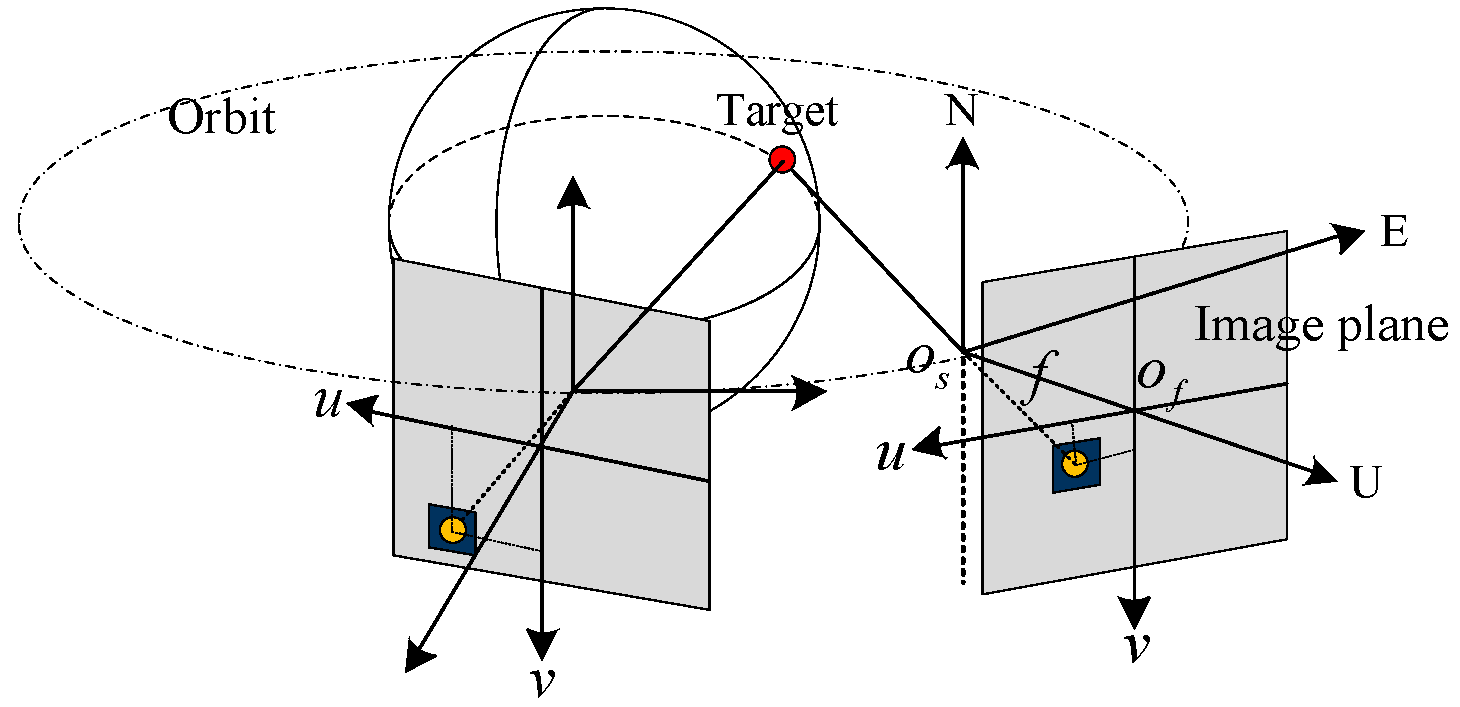

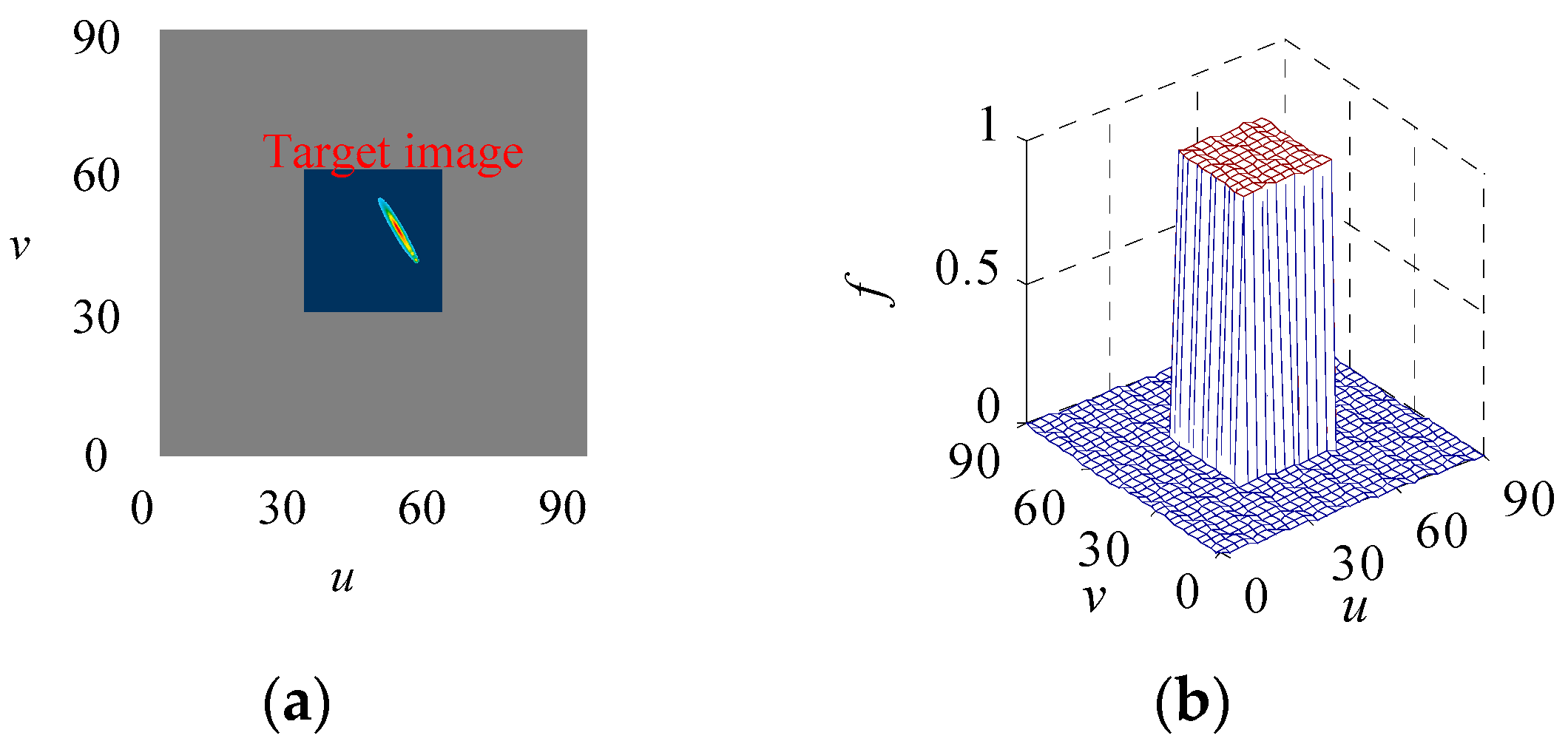
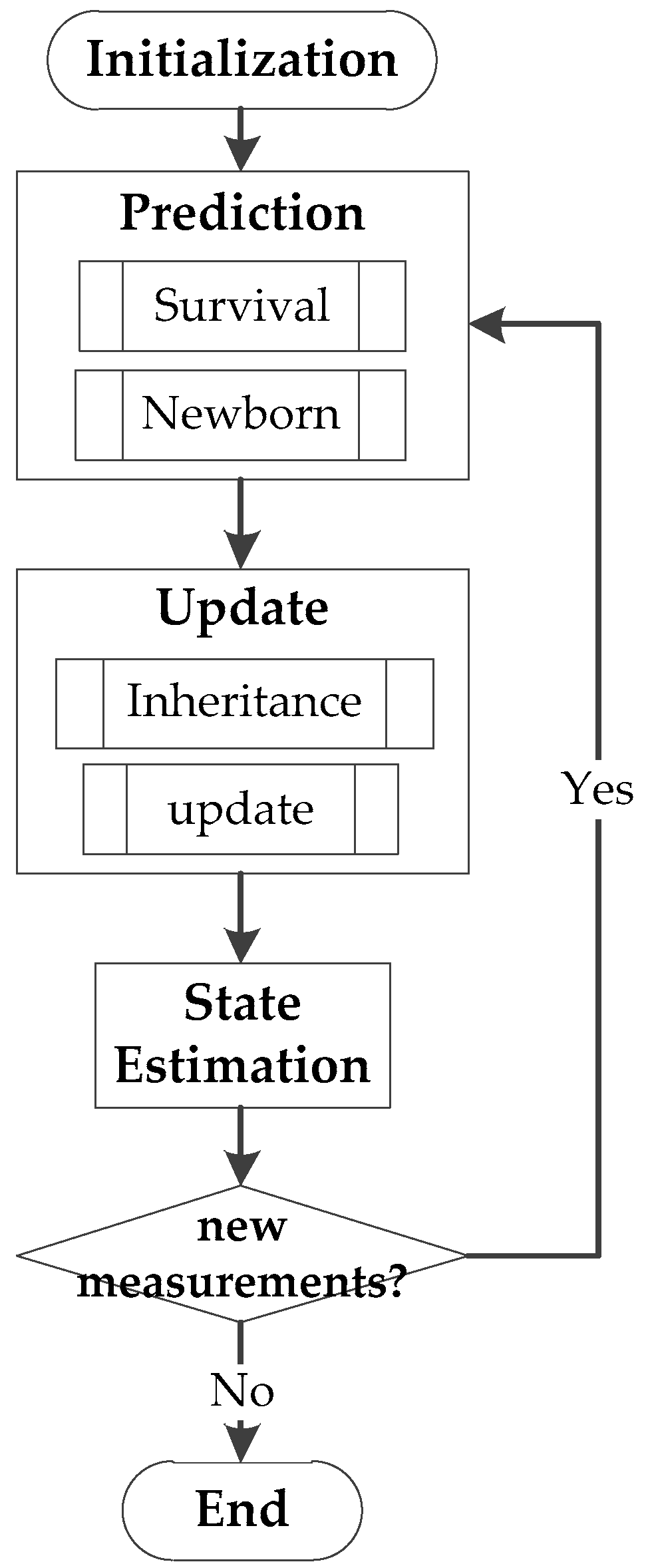
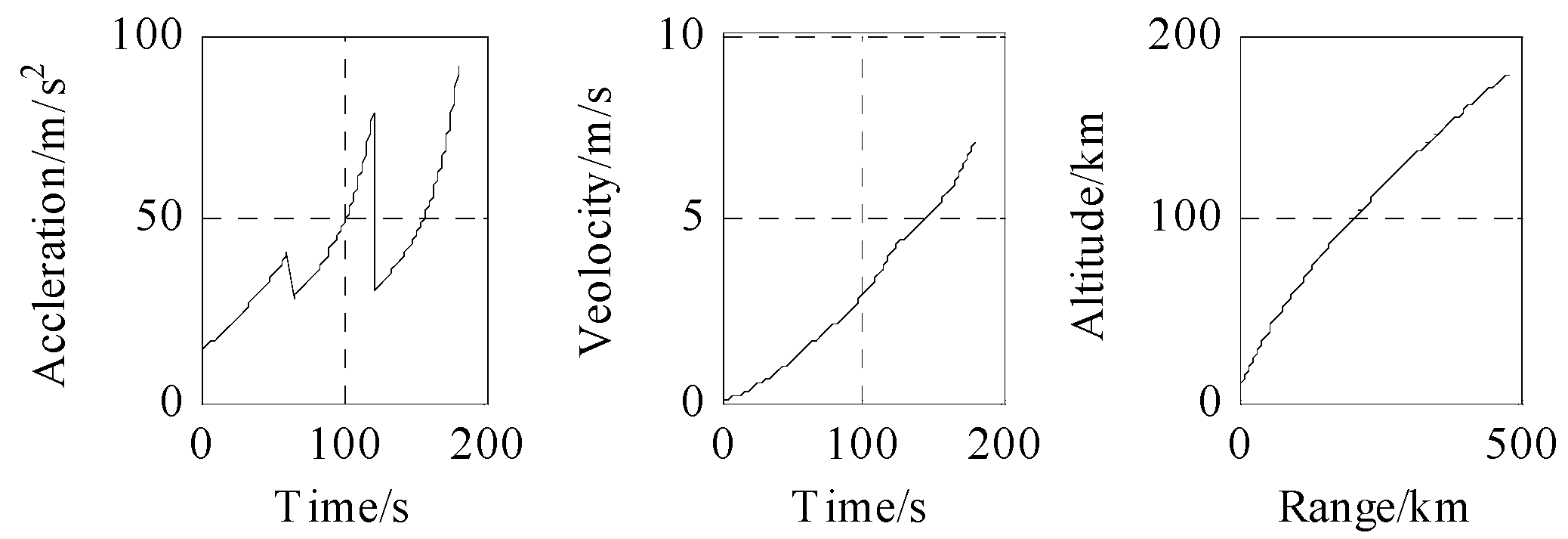
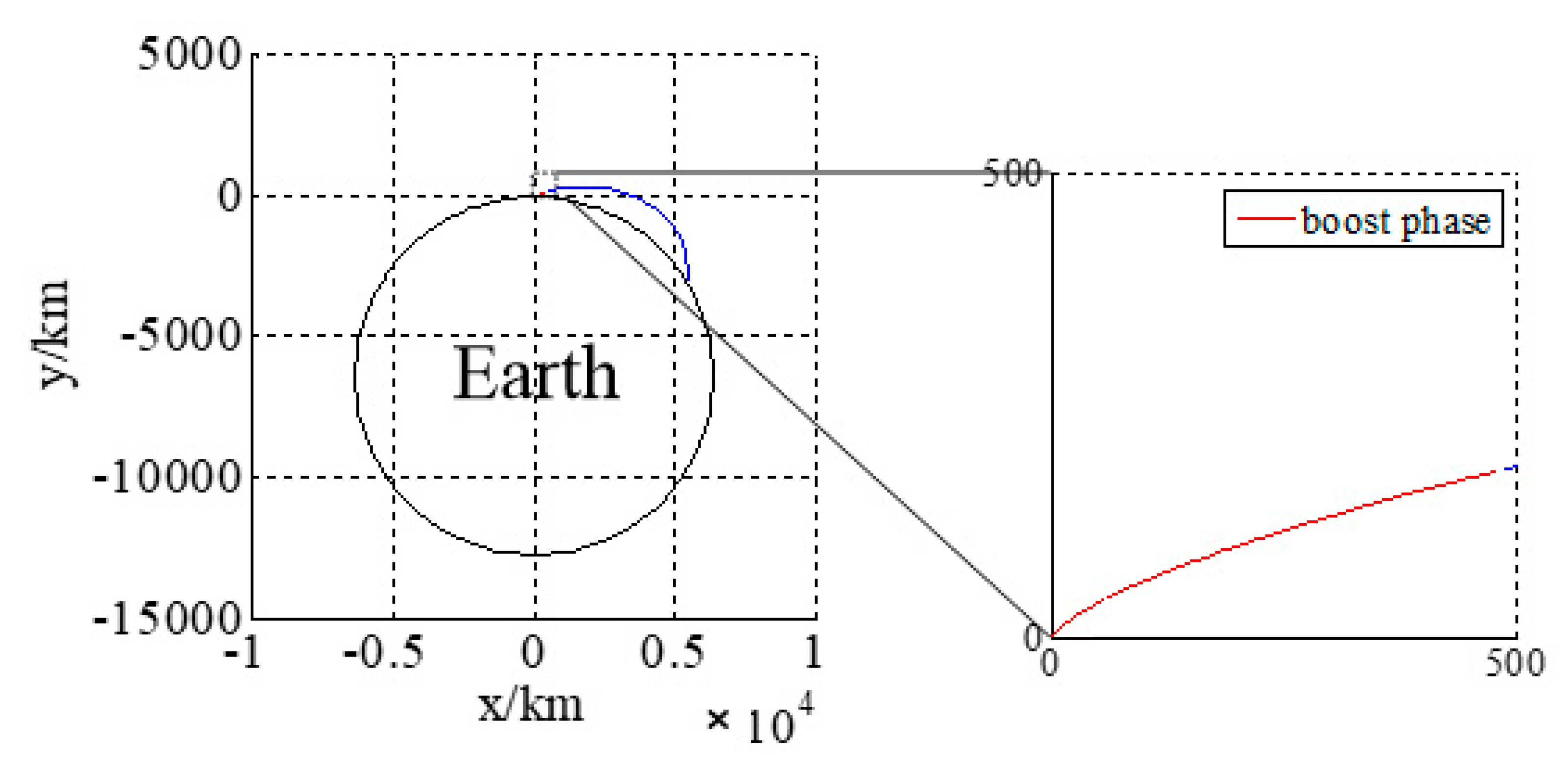
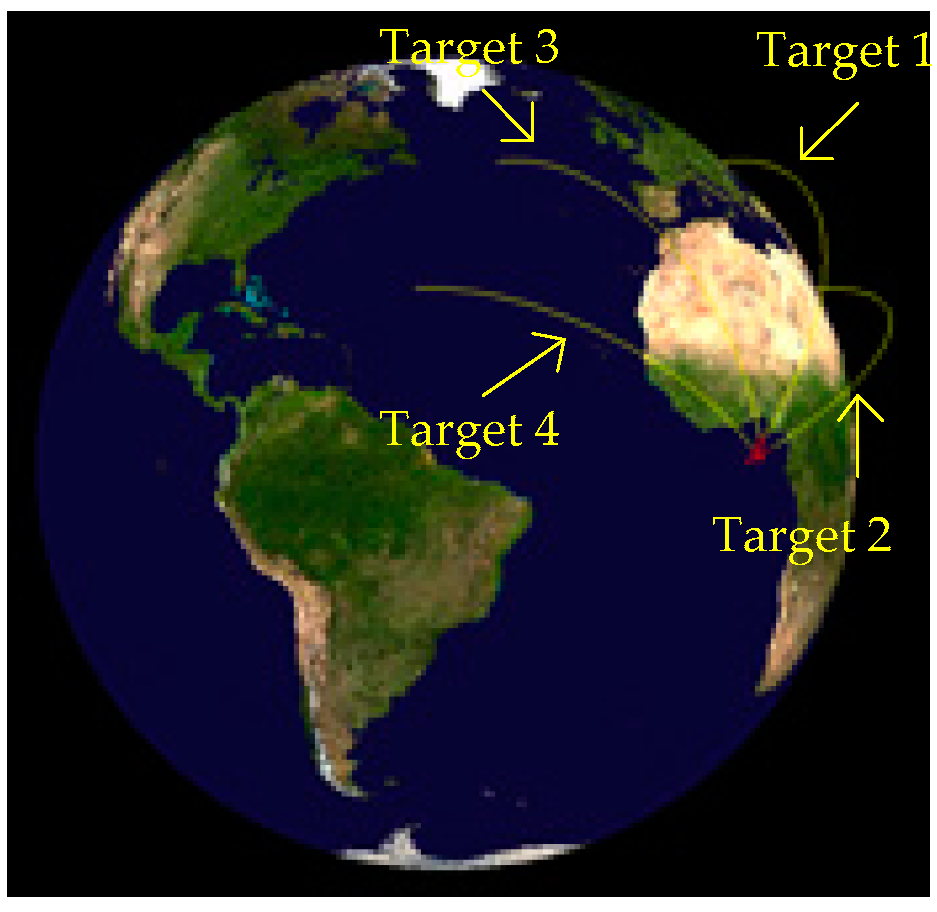

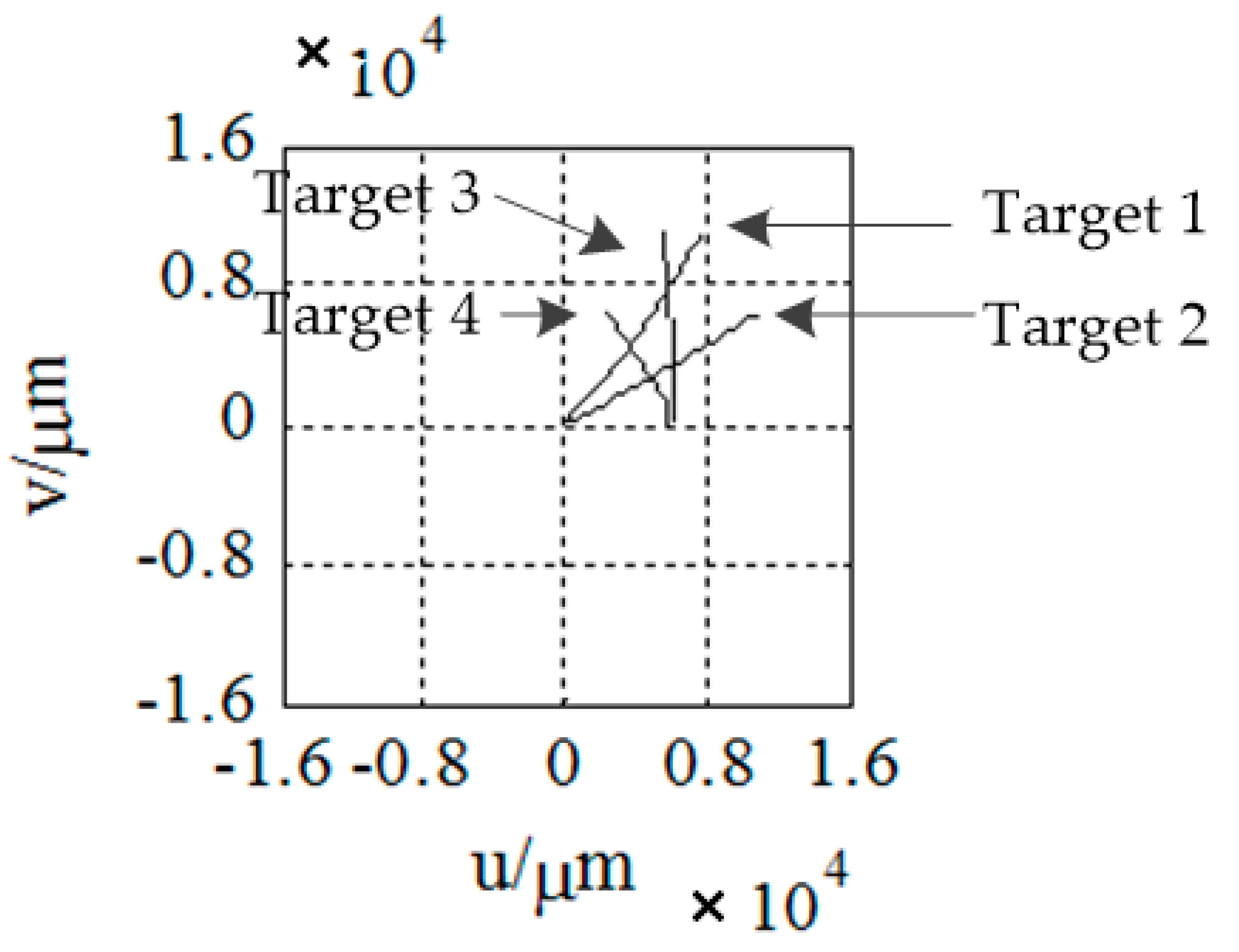



| Target 1 | Target 2 | Target 3 | Target 4 | |
|---|---|---|---|---|
| Launch point | (N 0°, E 0°) | (N 0°, E 0°) | (N 0°, E 3°) | (N 0°, E 3°) |
| Shooting | 30° | 60° | 330° | 300° |
| Captured time | T0 | T0 + 10 s | T0 + 20 s | T0 + 30 s |
© 2018 by the authors. Licensee MDPI, Basel, Switzerland. This article is an open access article distributed under the terms and conditions of the Creative Commons Attribution (CC BY) license (http://creativecommons.org/licenses/by/4.0/).
Share and Cite
Zhao, W.; Huang, S.; Cao, W. Space-Based Focal Plane Ambiguous Measurement Ballistic Target MeMber Tracking. Sensors 2018, 18, 3996. https://doi.org/10.3390/s18113996
Zhao W, Huang S, Cao W. Space-Based Focal Plane Ambiguous Measurement Ballistic Target MeMber Tracking. Sensors. 2018; 18(11):3996. https://doi.org/10.3390/s18113996
Chicago/Turabian StyleZhao, Wei, Shucai Huang, and Wenhuan Cao. 2018. "Space-Based Focal Plane Ambiguous Measurement Ballistic Target MeMber Tracking" Sensors 18, no. 11: 3996. https://doi.org/10.3390/s18113996
APA StyleZhao, W., Huang, S., & Cao, W. (2018). Space-Based Focal Plane Ambiguous Measurement Ballistic Target MeMber Tracking. Sensors, 18(11), 3996. https://doi.org/10.3390/s18113996





